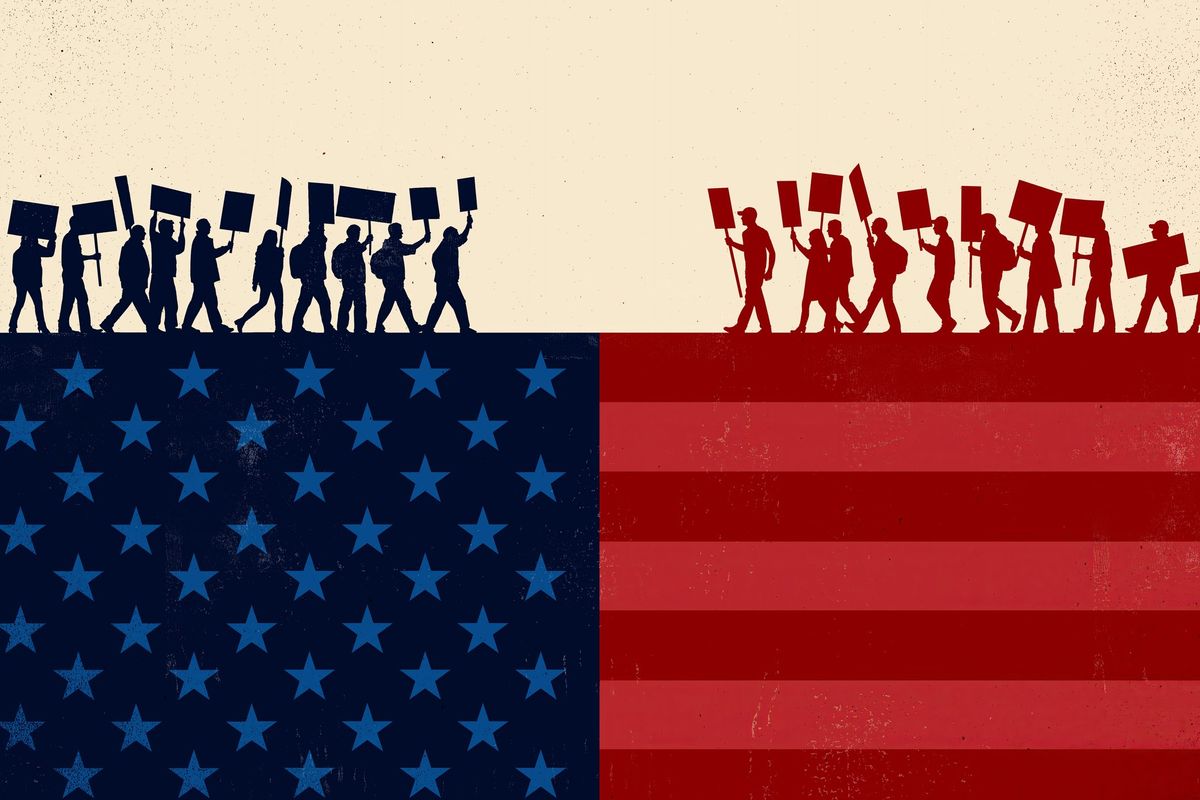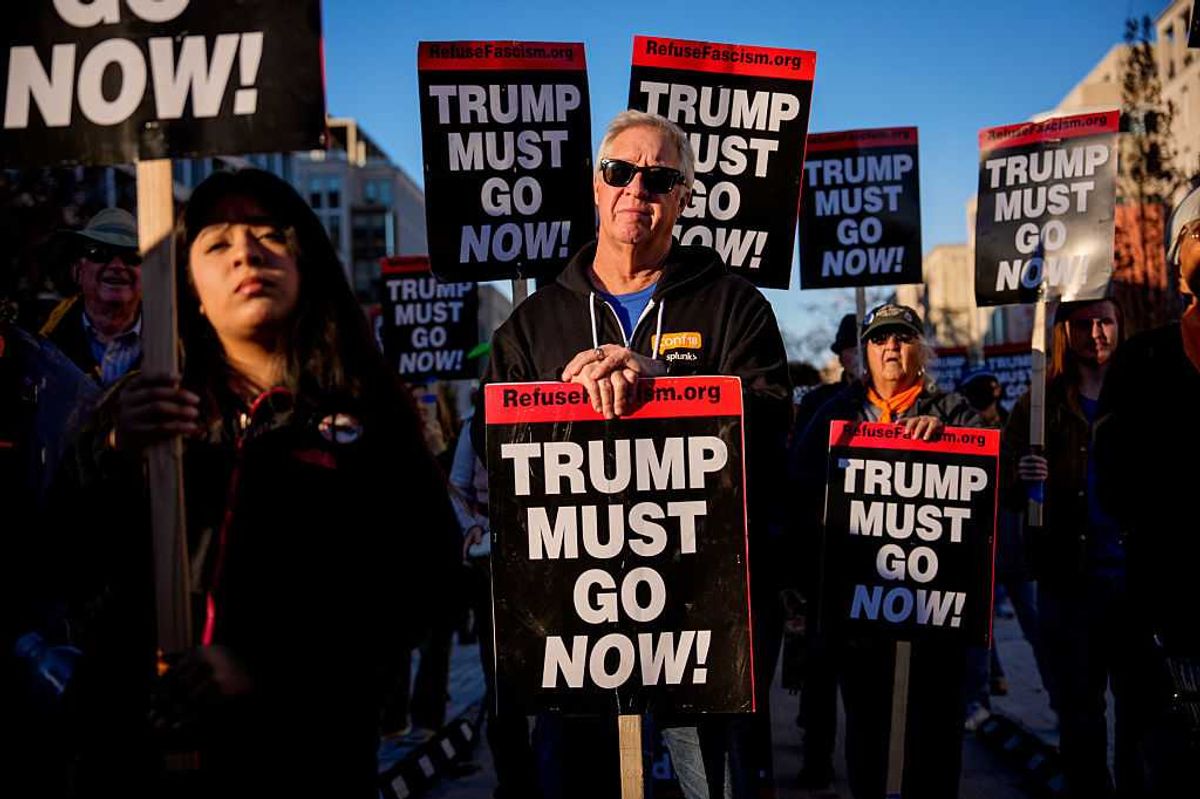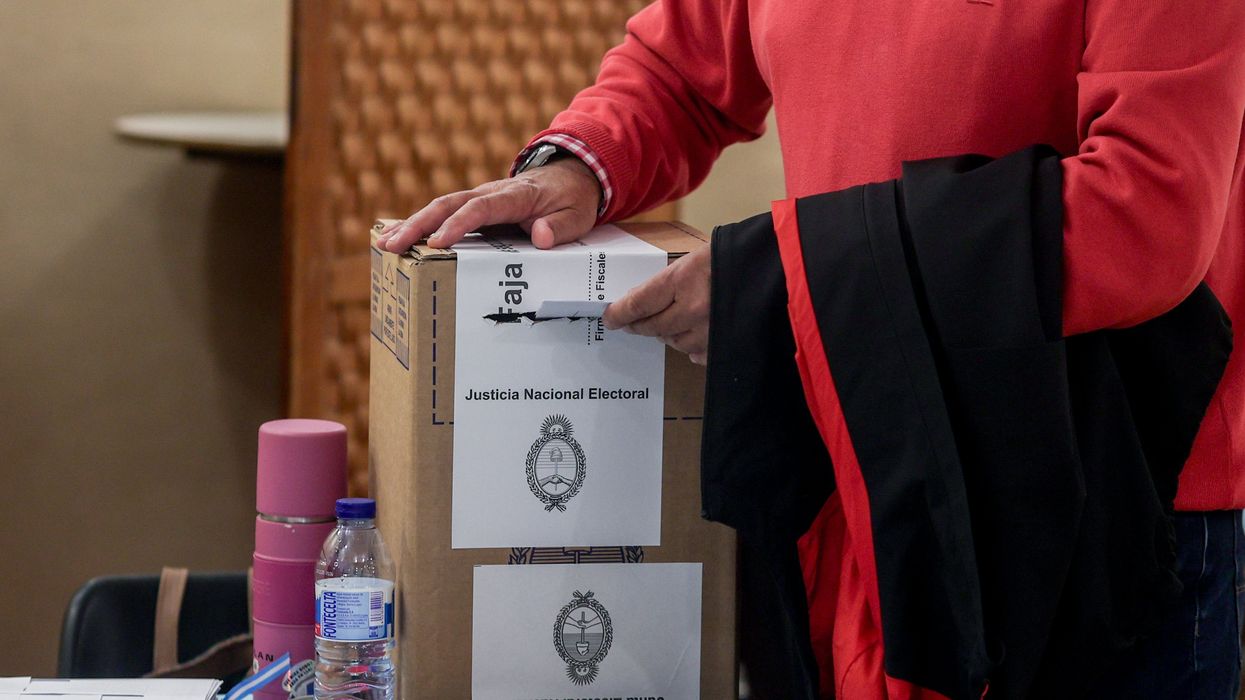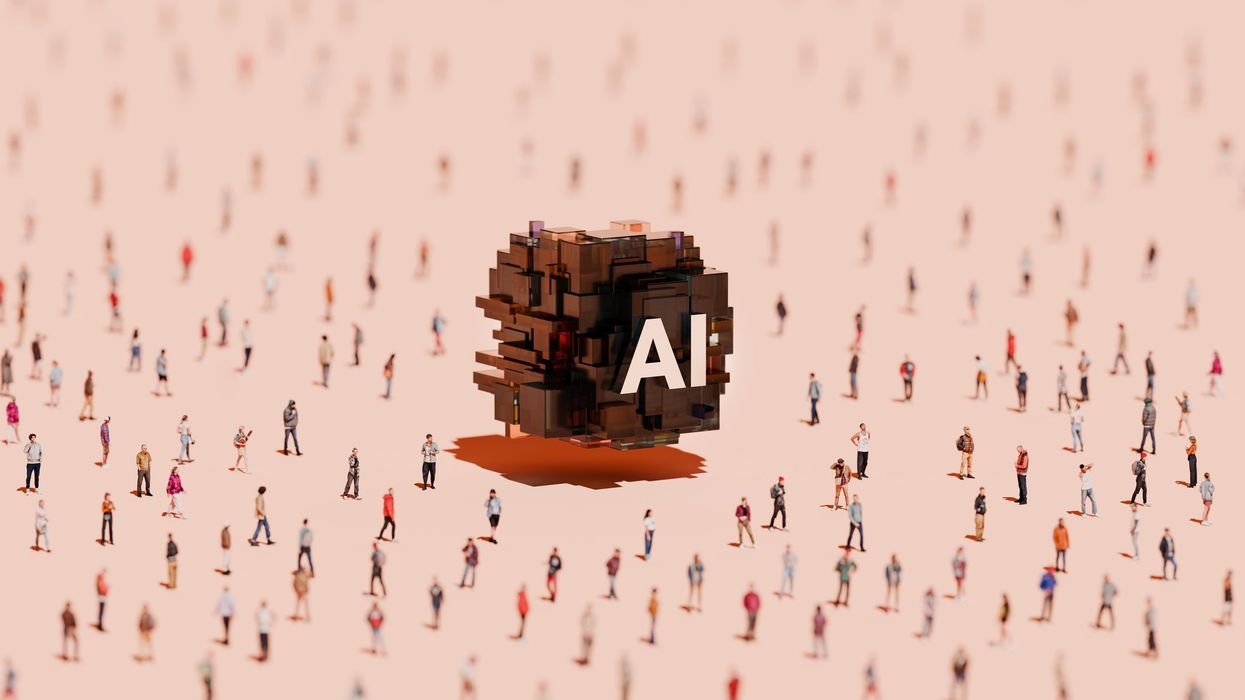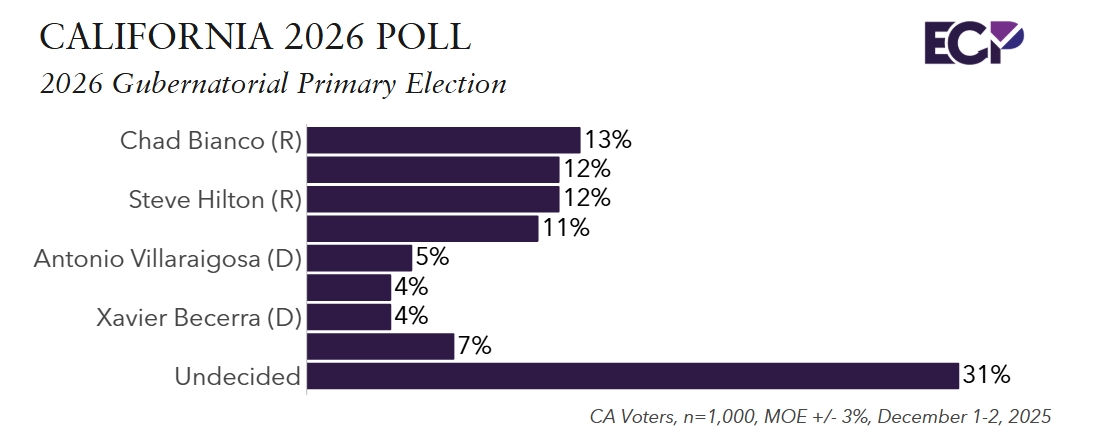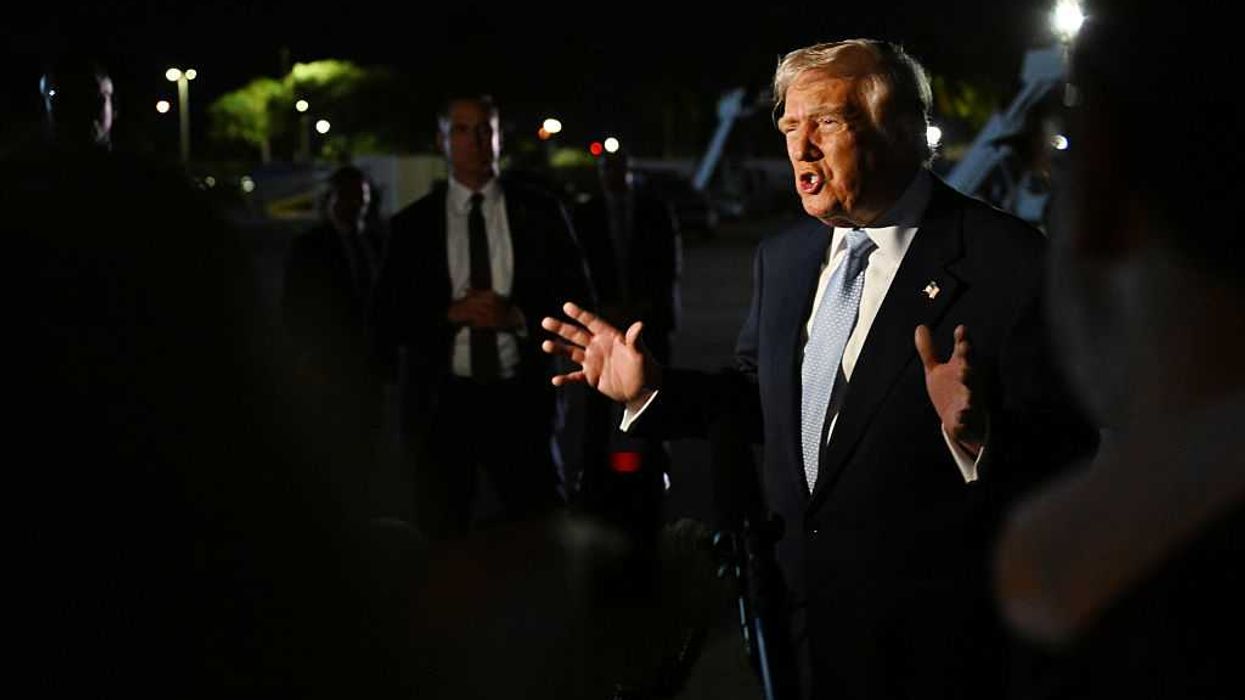Levine is the senior elections integrity fellow at the German Marshall Fund's Alliance for Securing Democracy. Batista is a project assistant at The Carter Center.
In 2024, more voters will head to the polls than ever before across the world and in the United States. However, elections by themselves do not guarantee democracy, and as the 2024 presidential elections heats up, it’s important that the U.S. consider other countries’ recent elections to help inform its preparations for November.
Last August, we went to Buenos Aires to observe the Argentina’s simultaneous and mandatory open primaries (PASO) as part of an international visitor’s delegation hosted by Electoral Transparency and the American Conference of Subnational Election Authorities, and we both continued to monitor Argentina’s general and runoff elections in October and November.
We saw uneasy Argentineans voting amid a bleak economic situation, setting the stage for a high-stakes fight between Sergio Massa, an incumbent minister presiding over high inflation, and Javier Milei, a libertarian who furiously denounced political elites with fiery, profanity-laden language. Milei proposed drastic economic reforms that would overhaul the role of government in Argentinian society. Although he baselessly cast doubt on Argentina’s electoral system, Milei won the polarized and divisive contest.
The deeply polarized context provides two sets of lessons for the U.S. and other onlookers holding elections this year: the first on electoral reform implementation, the second on artificial intelligence.
First, electoral officials must develop contingency plans when significantly changing election processes, even if the changes alter a highly criticized procedure. This happened in Argentina when the city of Buenos Aires’s electoral management body decided to have its voters cast their ballots on voting machines for local elections in August 2023. For decades, Buenos Aires voters had been using a political party ballots system to vote in both local and national elections. In the party ballots system, voters enter a “dark room” ( cuarto oscuro), pick the party ballot they would like to vote for and then put it in an envelope that they place into a cardboard box. This instrument has been targeted by substantial criticism from electoral experts, as it opens several opportunities for fraud (e.g., stealing of party ballots by voters) and puts too much burden on parties to monitor their ballots in polling centers throughout the country.
In its federalist system, Argentina’s provincial electoral management bodies have the discretion to determine the dates of local elections and the voting instrument(s) to be used in them. The autonomous city of Buenos Aires decided to keep its PASO on the same date as the national primary and pilot a different voting instrument, a new voting machine, for its local elections to improve ballot secrecy. As a result, Buenos Aires voters voted in two concurrent elections on the same day and had to use two different instruments for each of the elections: a new voting machine they had never used before for the local election, and a hand-marked paper ballot to vote for the national election.
The above situation generated significant confusion and discomfort on Election Day. Big lines were reported in voting locations across the city as voters voted on these machines for the first time. The procedure for voting in the two systems was also not implemented uniformly at all stations. Buenos Aires’s electoral management body (EMB) trained its officials to allow two voters to vote at the same time on different instruments. However, on Election Day, a national electoral judge denounced the long lines and stated that parallel voting by different voters at the same time was not permitted. She also raised questions about the security and legality of the electronic voting adopted by the city.
At least two other lessons were also learned from Buenos Aires’s pilot with the new voting system. One, electoral officials must develop a crisis communication strategy to respond to mistakes or unexpected outcomes arising from electoral reforms. But more importantly, election officials should also conduct dry runs of the voting process when significant changes to procedures are made before Election Day to help potentially identify and anticipate some of the issues that could occur during the voting. Even though the local EMB conducted many trainings on the use of the new voting machines, it did not appear to adequately consider how voters would handle voting in two different elections with different voting instruments.
In addition to electoral reform, AI impacted Argentina’s 2023 elections and are affecting U.S. presidential candidates from both major political parties. In Argentina’s presidential runoff campaign, Massa’s and Milei’s campaigns used AI-generated images to exalt themselves (Massa was a superhero; Milei was a lion) or portray their opponents in cartoonish stereotyped images (Massa as an old communist general; Milei as a Margaret Thatcher supporter during the Falklands war).
Deep fake videos using the candidates’ faces were circulated widely. One notable example was a video featuring an inebriated man implying drug use, onto which Massa’s face was superimposed. Although the video was eventually removed from social media platforms, its extensive reach prior to deletion and its proliferation on messaging apps like WhatsApp and Telegram render its impact on voters difficult to quantify.
AI introduces a novel and complex dimension to the twin challenges of combating election mis- and disinformation and protecting electoral infrastructure from cyberattacks. The enhanced persuasiveness of fake images, voices and videos exacerbates information pollution, particularly given some voters' propensity to embrace narratives that reinforce their existing beliefs. Election officials and social media platforms must collaboratively address this issue, with the latter vigilantly monitoring the content they host. Implementing measures to tag and identify AI-generated content is an urgent first step the platforms could take toward a cooperative effort with electoral authorities to ensure transparency. Election officials should also incorporate AI risk into training and election planning, double down on cybersecurity, and consider how to leverage AI and new technologies to help improve the administration of future elections.
It is increasingly important for AI companies to implement measures to prevent their technology from being used to pollute the information environment during electoral campaigns. OpenAI, one of the leading AI companies in the market, recently released policies that other AI companies should consider, including not allowing the creation of chatbots that impersonate people or institutions, not allowing the production of information that deters people from participating in elections, and the development of a tool for detecting images generated by their AI image generator, DALL-E. While the effectiveness of these measures is yet to be tested, other generative AI companies must follow their lead in developing guidelines and efforts to protect the information environment from malicious use of their technology.
As the U.S. gears up for its most consequential election in recent memory, it needs to stay abreast of foreseeable changes faced by other countries in conducting their own elections. Whether that’s Buenos Aires’s challenging voting machine pilot in its PASO or the prominent role of artificial intelligence in shaping Argentina’s electoral narratives throughout 2023. Incorporating lessons from examples like these could be the difference between whether the U.S. conducts a 2024 election that is perceived as legitimate or stolen by large segments of its electorate.


